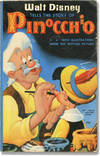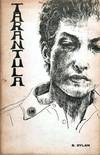![Illustrated manuscript on paper, entitled "Hansho [or Bansho] kai" ["Ryukyu Potatoes Explained"]](https://d3525k1ryd2155.cloudfront.net/h/260/957/1478957260.0.m.jpg)
Illustrated manuscript on paper, entitled "Hansho [or Bansho] kai" ["Ryukyu Potatoes Explained"]
by SWEET POTATOES
- Used
- Condition
- See description
- Seller
-
New York, New York, United States
Payment Methods Accepted
About This Item
Six pages of color paintings of species of sweet potatoes. 14 folding leaves. 8vo (267 x 190 mm.), orig. decorated semi-stiff wrappers, stitched as issued, manuscript title label on upper cover. [Japan]: late Edo.
Sweet potatoes are one of the glories of the Japanese table. The author of the text of this finely illustrated manuscript was the Nagasaki resident Tokitane Kohiga, mathematician and scholar of materia medica. The text was written in October 1805, and this is surely a later copy.
The sweet potatoes of Ryukyu (today, Okinawa) are famous. The potatoes came from China and began to be cultivated in Ryukyu in the early 17th century. By 1611, their cultivation extended to the Satsuma Domain and, several years later, these sweet potatoes appeared in Nagasaki. Sweet potatoes have remained an important crop throughout Japan, especially in times of famine.
Kohiga describes the importance of the sweet potato in the Japanese diet and comments that its cultivation was widespread, not only in Japan but in many other places, including the Philippines, China, and "the Western world." He comments on their superb nutritional value and provides extensive details on cultivation, stating that sweet potatoes grow equally well in rich and poor soil.
Kohiga gives instructions on how to successfully store the crop after the harvest. This is followed by many recipes, including how to process sweet potatoes into flour for dumplings, and how to make shochu, the alcoholic beverage, from fermented sweet potatoes. The stems and skins of the potatoes were fed to horses and cows.
The fine illustrations depict six species of the sweet potato, showing each one's leaf, the entire potato, and a cross-section. The six species are: Shiro imo, Mitsuba imo, Ninjin imo, Sakura imo, Satsuma imo, and Kitsunae imo. For each one, the author furnishes comments on its names, size, weight, ease of cultivation, taste and texture, appearance when cooked, best cooking methods, and recipes for particularly good dishes.
Following the illustrations, the author provides four additional detailed regional recipes. An example is for the Mitsuba imo: julienne the potato, season with sesame oil, mix with flour and seasonings, and deep fry in oil.
Fine copy. Minor worming.
Sweet potatoes are one of the glories of the Japanese table. The author of the text of this finely illustrated manuscript was the Nagasaki resident Tokitane Kohiga, mathematician and scholar of materia medica. The text was written in October 1805, and this is surely a later copy.
The sweet potatoes of Ryukyu (today, Okinawa) are famous. The potatoes came from China and began to be cultivated in Ryukyu in the early 17th century. By 1611, their cultivation extended to the Satsuma Domain and, several years later, these sweet potatoes appeared in Nagasaki. Sweet potatoes have remained an important crop throughout Japan, especially in times of famine.
Kohiga describes the importance of the sweet potato in the Japanese diet and comments that its cultivation was widespread, not only in Japan but in many other places, including the Philippines, China, and "the Western world." He comments on their superb nutritional value and provides extensive details on cultivation, stating that sweet potatoes grow equally well in rich and poor soil.
Kohiga gives instructions on how to successfully store the crop after the harvest. This is followed by many recipes, including how to process sweet potatoes into flour for dumplings, and how to make shochu, the alcoholic beverage, from fermented sweet potatoes. The stems and skins of the potatoes were fed to horses and cows.
The fine illustrations depict six species of the sweet potato, showing each one's leaf, the entire potato, and a cross-section. The six species are: Shiro imo, Mitsuba imo, Ninjin imo, Sakura imo, Satsuma imo, and Kitsunae imo. For each one, the author furnishes comments on its names, size, weight, ease of cultivation, taste and texture, appearance when cooked, best cooking methods, and recipes for particularly good dishes.
Following the illustrations, the author provides four additional detailed regional recipes. An example is for the Mitsuba imo: julienne the potato, season with sesame oil, mix with flour and seasonings, and deep fry in oil.
Fine copy. Minor worming.
Reviews
(Log in or Create an Account first!)
Details
- Bookseller
- Jonathan A. Hill, Bookseller, Inc.
(US)
- Bookseller's Inventory #
- 8295
- Title
- Illustrated manuscript on paper, entitled "Hansho [or Bansho] kai" ["Ryukyu Potatoes Explained"]
- Author
- SWEET POTATOES
- Book Condition
- Used
- Quantity Available
- 1
- Keywords
- agriculture, diet, gastronomy, Japan, Japanese, manuscript, nutrition
Terms of Sale
Jonathan A. Hill, Bookseller, Inc.
5 day return guarantee, with full refund including shipping costs for up to 5 days after delivery if an item arrives misdescribed or damaged.
About the Seller
Jonathan A. Hill, Bookseller, Inc.
Biblio member since 2009
New York, New York
About Jonathan A. Hill, Bookseller, Inc.
By appointment
Glossary
Some terminology that may be used in this description includes:
- Wrappers
- The paper covering on the outside of a paperback. Also see the entry for pictorial wraps, color illustrated coverings for...
- Fine
- A book in fine condition exhibits no flaws. A fine condition book closely approaches As New condition, but may lack the...
- Leaves
- Very generally, "leaves" refers to the pages of a book, as in the common phrase, "loose-leaf pages." A leaf is a single sheet...
- Poor
- A book with significant wear and faults. A poor condition book is still a reading copy with the full text still readable. Any...
![Illustrated manuscript on paper, entitled "Hansho [or Bansho] kai"](https://d3525k1ryd2155.cloudfront.net/h/260/957/1478957260.3.s.jpg)

